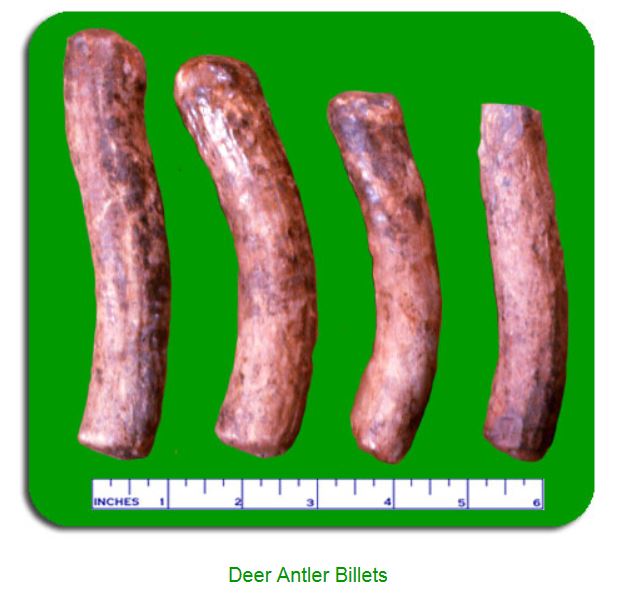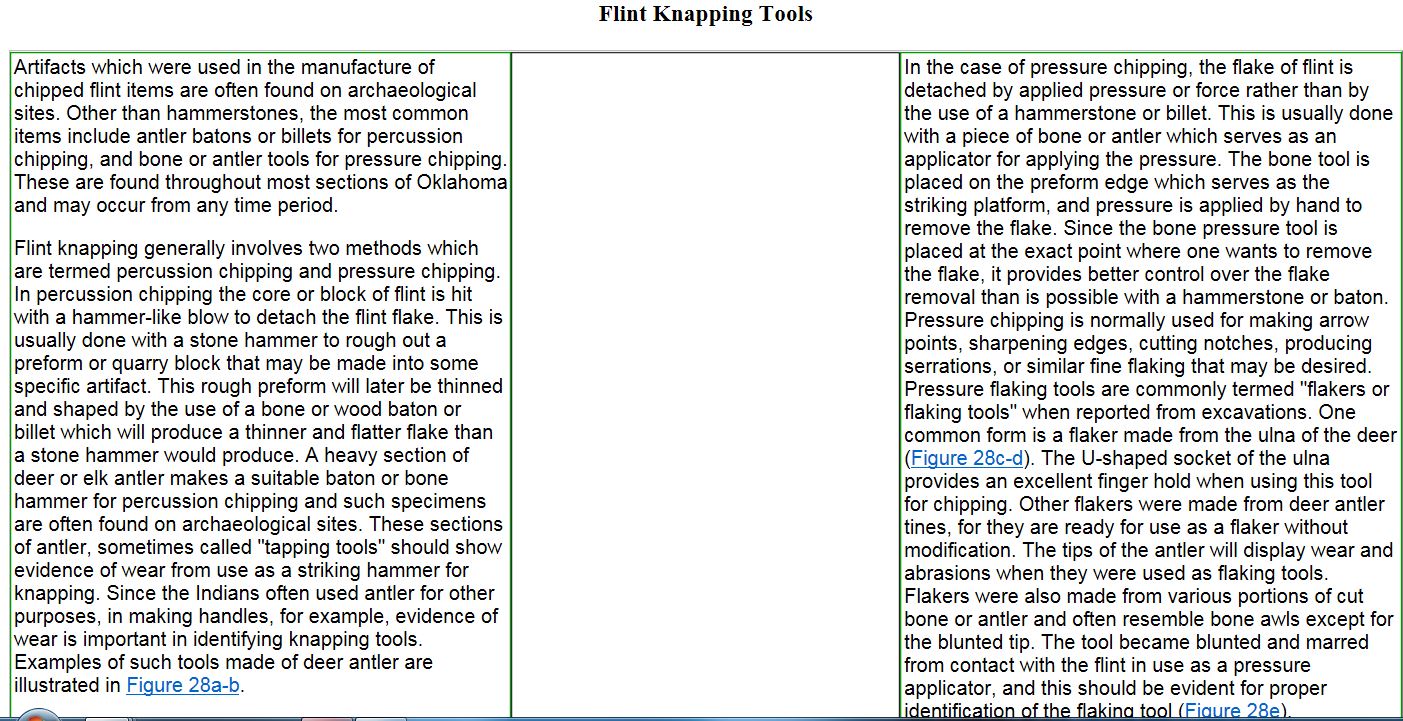The 1950 Rock Shelter Discovery

Dr. Webb of the UK Anthropology Department removed the skeletal remains for analysis and preservation.
One of the discoverers reported that the shelter floor was extensively excavated by artifact hunters following the discovery of the burial. The boys found the
skeletal remains buried about 20 feet inside the shelter. In digging the interior floor, the chared remains of some 13 fire pits were found.
The area of the rock shelter has been closed to public access by the owner, and he has requested that it's location not be disclosed.
Artifacts found in the rock shelter
I was unable to obtain photos of the skeleton. Apparently there are Federal laws agains photographing Native American remains.
The first two photos are of the spear point that was found. The main body of the point is about 4 inches in length. There is a narrow fluke which
is concealed by the spear shaft on which the point has been mounted.
The knipped edge of the point is still quite sharp and appears to have been made with a degree of skill.
Click here for an larger image of this photo.
Click here for an larger image of this photo.
The next two photos are of the tomahawk. It is approximate;y 5 inches by 4 inches.
The tomahawk stone does not appear to have been worked in any way and was probably a found object that was adapted to its use.
Click here for an larger image of this photo.
Click here for an larger image of this photo.
The next four photos are aspects of an antler tool. Its purpose is not obvious, but the flat surface has apparently been well-used.
Our best guess is that it was used in the final preparation of hides. It may have been used to smooth and make the hide softer and more pliable,
although somewhat similar antler artifacts were known to have been used as pressure flaking/nipping tools in the preparation of arrow and spear points.
The "handle" of the tool is about five inches in length. The working end appears to be the attachment area of the antler to the animal's skull.
This seems to be a deer or elk antler, rather than the smother, bone-like structure of a bison horn.
The hole for the thong was made by the current owner. "Pottery was made via the "rope" or "coil" method. In many cases a very smooth stone or shell was used to smooth the inner and outer surfaces. In many cases, the outer surface was impressed with cord (cord marked) to provide a griping surface and reduce the potential for cracks. Sometime they impressed the surface with "fabric" that was made from plant material. In reviewing many artifacts over the years, I have never encountered a "hide smoothing" tool, however, who knows what a Native American could develop to make work easier or more efficient. Processing a hide, however should not impart the fine scratches." Matthew Maley
Click here for an larger image of this photo.
Click here for an larger image of this photo.
Click here for an larger image of this photo.
Click here for an larger image of this photo.
November 26, 2015
I have come across some evidence that the unidentified tool may have been used for point knapping.
The general form and dimensions of the tool are similar to the examples of knapping tools made
from antler bone in the photo below.


Link to the source of this article.
Photos of the Carter City Rock Shelter Site
The shelter is in a prime location. It has access to a year-round spring and overlooks a major creek that empties into Tygarts Creek.
There is some evidence that this was a migration pathway for American bison in pre-European times.
Tygarts Creek was one of the main thoroughfares leading from central eastern Kentucky to the Ohio River.
Upon reaching the Ohio River, the Scioto River could be reached a couple of miles downstream to the west. The Scioto in turn led north to the
principle "Woodland People" and "Mound Builder" settlements in central Ohio.
From the trail leading up to the cliff face
The shelter entry is about 20 feet high and 25 feet wide at the entrance
The large bolder is about 3 feet tall. At that point the shelter height is about 10 feet
The walking stick by the rock is about 5 feet long.
It's difficult to tell if the mounds are natural or man made.
About 18 feet into the shelter the ceiling is much lower and crouching is required to gain access.
There's clearance enough to crawl another 30 feet deeper. I'm told the cave extends for some distance.
Looking southeast from inside the shelter.
Another small shelter about 100 feet south of the main one.
Inside the small shelter
An entrance to a small cave.